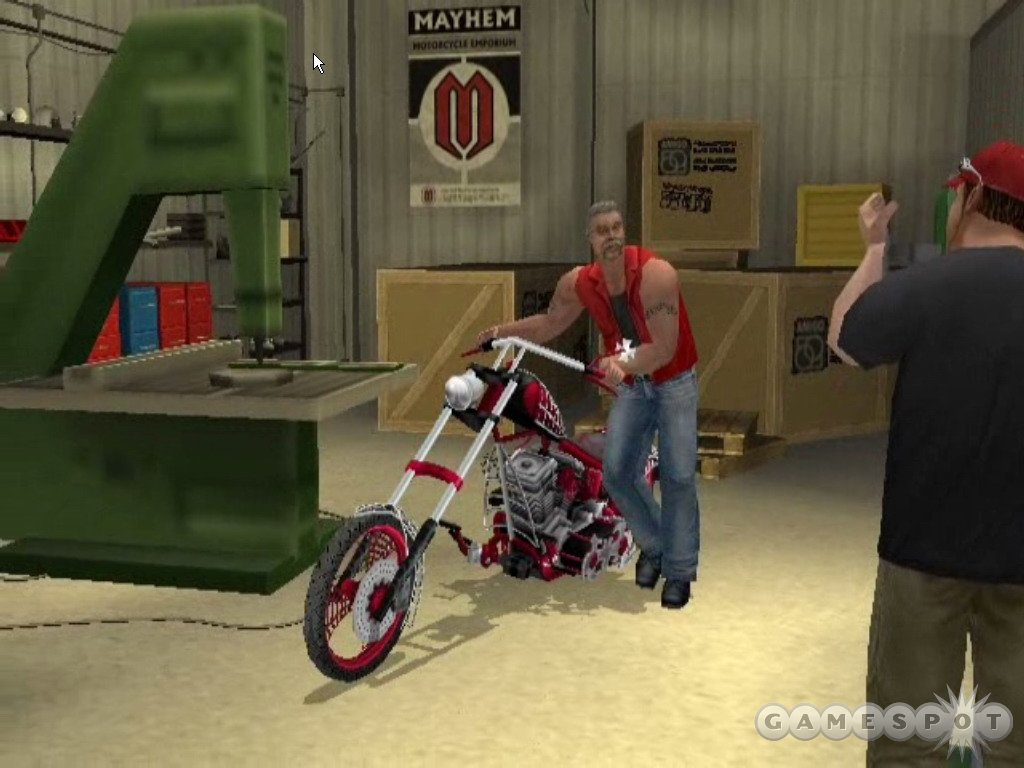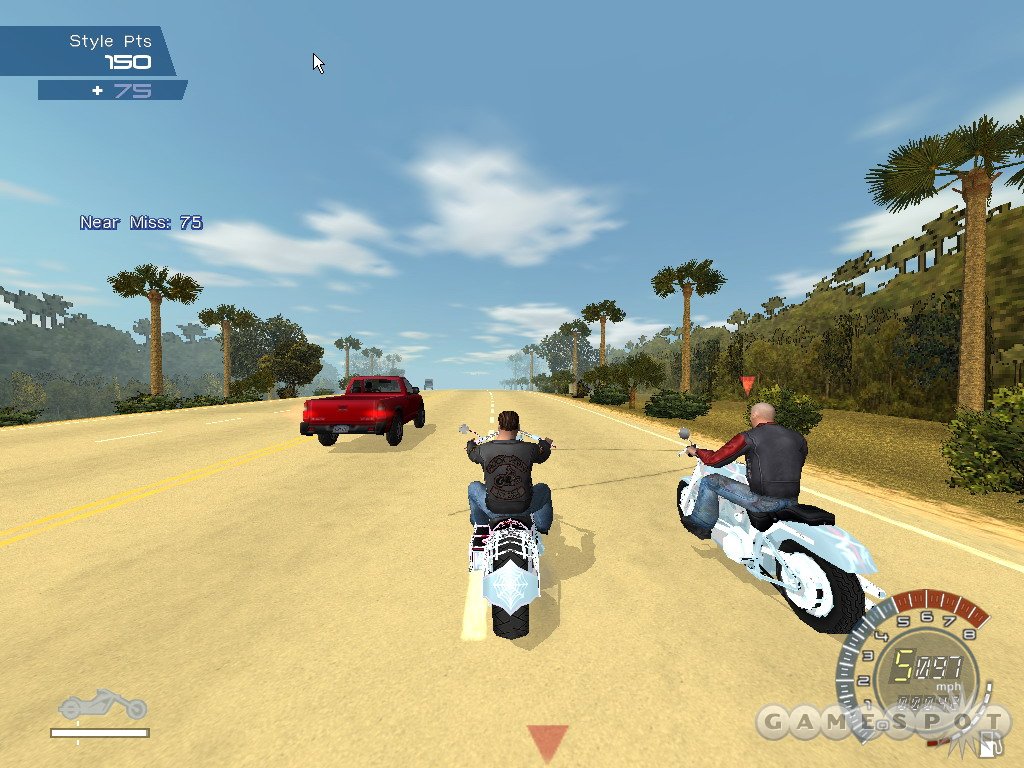It's possible that there's a great idea for a game buried somewhere in the Discovery Channel's hit reality TV show American Chopper. Each week the Teutul clan's members, Paul, Paul Jr., and Mikey, scream at one another while working against the clock to design and build a custom chopper. If there's a decent game to be wrenched out of this concept, however, Activision's American Chopper isn't it. Lacking both the volatile charm and the compelling technical details of the series, it's little more than a halfhearted racing game that features some appearances by characters and from locations you've seen on TV.

You'd think a game based on a TV show about building custom choppers would focus on, say, building some custom choppers. Well, in this case, at least, you'd be wrong. A bike-building thread runs through American Chopper, but it's so simplistic and disconnected from the rest of the game that it feels like an afterthought. At the end of each chapter, you get to add a couple of parts to your bike. For instance, your first two decisions are between solid and skinny front ends and a chromed or ribbed motor.
Are the differences between the available equipment purely aesthetic? The game doesn't say, and since the parts don't feature any relevant stats, the choice is completely guesswork. You do eventually get to show off your custom bike, but given the game's license, there's no excuse for such a lame customization feature.
With bike customization firmly in the background, the gameplay is focused almost exclusively on bike riding. The game consists of 10 chapters with two detours to chopper shows in Daytona Beach, Florida, and Sturgis, South Dakota. Each chapter features five or six challenges, roughly half of which are optional. The other half of the challenges are required to be completed before you can unlock the following chapter. The challenges actually represent a pretty good variety of goals. There are straight checkpoint races, drag races (during which you must shift gears manually, regardless of whether you have the transmission option set to "automatic"), and some races against the clock. American Chopper also includes some strange racing games. For instance, there's a modified checkpoint race called a "poker race." At each checkpoint, you receive a card. Once you've hit five checkpoints and have collected a full poker hand, you can either return to the starting point to end the race, or you can continue hitting checkpoints (as long as there's time left on the clock) to get new cards. The winner is the racer with the best hand. Later in the game, there's a race type called motoball, which is kind of a frustrating mix of motorcycle racing and soccer.
The bike-riding challenges take place in one of two modes. In "open road" mode, you drive in one direction down an unfolding stretch of traffic-clogged highway. "Town" mode lets you drive freely through a fictionalized version of Montgomery, New York, which is home to Teutul's Orange County Choppers. In both modes, you accrue style points by completing various tasks, such as scaring pedestrians, driving without incident for a certain period of time, nearly crashing into other vehicles, and losing the cops (who'll give chase if they see you going more than 50mph). These style points can be used to unlock either extra parts for your bike or bonus missions. In some cases, they are required to complete a challenge. Unfortunately, there isn't a whole lot of incentive to play the main game, much less worry about unlocking bonuses. The bike control is stiff and unsatisfying, and although you're given a variety of challenges, by the second or third chapter you'll get the sinking feeling that you've seen everything the game's roughly nine hours' worth of content has to offer. You do get to drive a dozen or so choppers from the series, such as the POW/MIA bike and Mikey's ridiculous blues bike. But, again, there aren't any stats available for any of the bikes, so unlocking a new one is mostly a cosmetic reward.
You play the "new guy" who must run errands for the Teutuls. The real Paul and Paul Jr. provide their own voices, but the aggravation that characterizes most of their interactions on the show is replaced here by a kind of monotone boredom. If they were enthusiastic about this project, it certainly doesn't come through in their voices. Similarly, the choppers themselves make more of a rattling buzz than the deep-throated roar you'd expect. The visuals are competent, and, as expected, they're much crisper on the PC than on either of the two console versions. However, they're completely devoid of any kind of personality, so neither the towns nor the open roads feature anything very interesting to look at.

The PC version's "customize controls" option appears to be perpetually unavailable. No combination of accessing the menu at any time before, during, or after a mission would unlock it, and both the readme file and the manual completely lack information on it. Compared to the other things that are wrong with the game, though, this point is minor.
A development team in St. Petersburg, Russia, developed American Chopper. This may explain why, for instance, a mission that sees you driving from Montgomery to Albany, New York, takes you through what appears to be Florida, and it may explain why another part of New York looks exactly like Death Valley, California. This disconnection between source material and final product extends to the game design, which completely fails to capture any of the show's appeal. American Chopper is a classic example of a game that seems to have little purpose other than to cash in on a hot license.